Fix WordPress Site Hacked Remove Malware Website
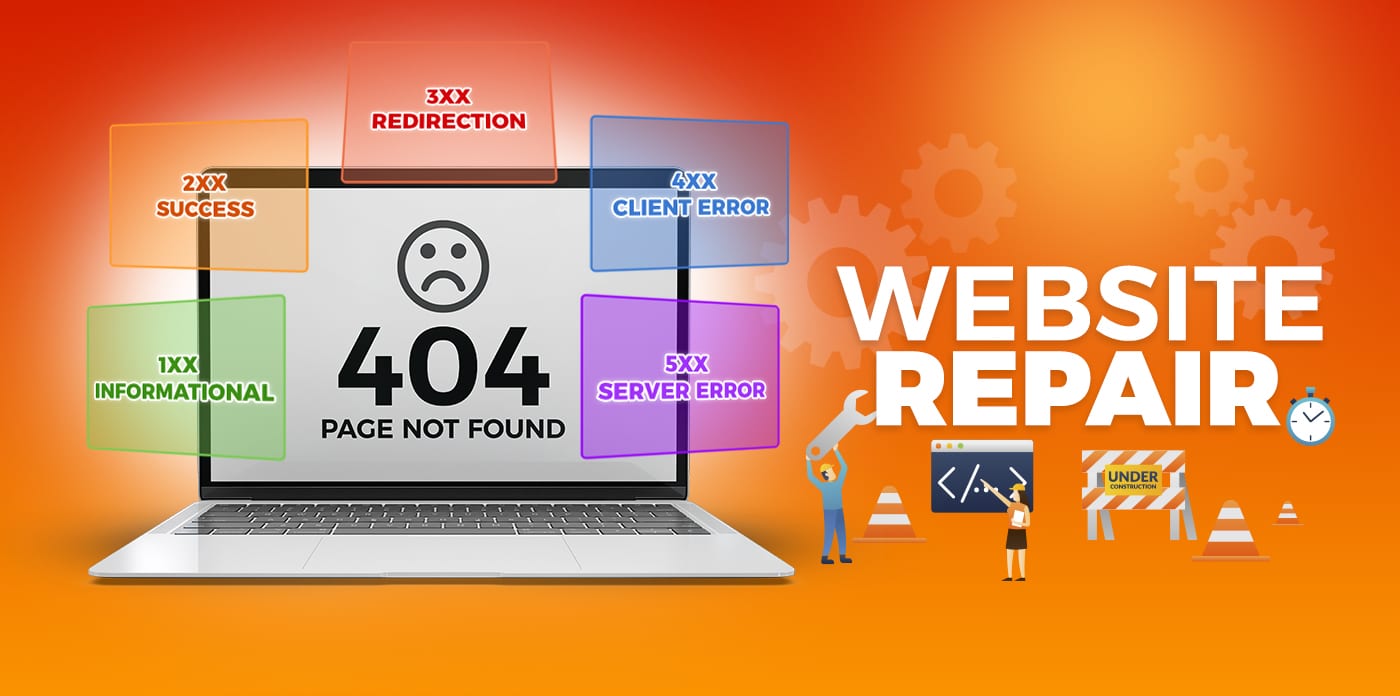
Addressing common website issues can significantly enhance the user experience and visitor retention. Below are some prevalent problems you may encounter:
- Slow Loading Speed: Slow loading speed frustrates visitors, prompting them to leave your website. To improve your website’s loading speed, consider optimizing images, minimizing code, and using a Content Delivery Network (CDN).
- Unresponsive Design: An unresponsive design renders your website not looking good or working well on different devices like smartphones and tablets. Ensure your website adapts seamlessly to all screen sizes.
- Broken Links: Broken links can diminish user interest in your website. Make sure to regularly check your website and fix broken links as soon as possible.
- Security Problems: Security problems can leave your website vulnerable to hackers and other malicious actors. Ensure your website’s security by using strong passwords, keeping software up-to-date, and implementing a security plugin.
- Poor Content: Poor content can bore visitors, prompting them to leave your website. Ensure your content is well-written, informative, and engaging.
- Lack Of Usability: A website that’s challenging to navigate will frustrate visitors, leading them to leave. Ensure your website is user-friendly by adhering to good design principles and using clear, concise language.
By avoiding these common website problems, you can improve the user experience of your website and attract more visitors.
Additional Tips to Avoid Website Problems
- Regular Testing of Website: Test your website regularly to ensure it functions correctly and is problem-free. Utilize various tools like Google Lighthouse and GTmetrix for testing.
- Using Content Management System (CMS): A CMS can facilitate managing your website content and making changes without coding knowledge. Popular CMS options include WordPress, Drupal, and Joomla.
- Get Professional Help: If you’re uncomfortable managing your website, consider hiring a web developer or design company for assistance. This can ensure the creation of a high-quality, problem-free website.
Website Maintenance
Fix WordPress Site Hacked – Remove Malware & Restore Your Website
Is Your WordPress Website Hacked? We Can Help!
A hacked WordPress site can be a nightmare, leading to lost revenue, damaged reputation, and potential security risks for your visitors. If your site has been compromised, we specialize in WordPress malware removal, hacked site recovery, and security hardening to restore your website quickly and effectively.
Why Choose Our WordPress Malware Removal Service?
 Fast Malware Removal – Get your website cleaned and back online ASAP
Fast Malware Removal – Get your website cleaned and back online ASAP Complete Security Scan & Fixes – Identify vulnerabilities and apply fixes
Complete Security Scan & Fixes – Identify vulnerabilities and apply fixes Blacklist Removal – Restore access if Google or web hosts have blocked your site
Blacklist Removal – Restore access if Google or web hosts have blocked your site Firewall & Security Hardening – Prevent future attacks and keep your site protected
Firewall & Security Hardening – Prevent future attacks and keep your site protected Guaranteed Fixes – We ensure your website is malware-free and secure
Guaranteed Fixes – We ensure your website is malware-free and secure No Fix, No Pay! – Satisfaction guaranteed
No Fix, No Pay! – Satisfaction guaranteed
Common Signs Your WordPress Site is Hacked
If you’ve noticed any of the following, your site may be compromised:
 Google Warning: “This site may be hacked” or “Deceptive Site Ahead”
Google Warning: “This site may be hacked” or “Deceptive Site Ahead” Your website is redirecting to another site you don’t recognize
Your website is redirecting to another site you don’t recognize Unwanted pop-ups, spam, or strange ads appear on your site
Unwanted pop-ups, spam, or strange ads appear on your site Your site is suddenly slow or crashing frequently
Your site is suddenly slow or crashing frequently WordPress admin login is inaccessible or new users appear
WordPress admin login is inaccessible or new users appear Suspicious files, plugins, or unknown scripts in your WordPress installation
Suspicious files, plugins, or unknown scripts in your WordPress installation Hosting provider suspended your website due to security concerns
Hosting provider suspended your website due to security concerns
Common WordPress Hacked or Malware Messages
If you’re seeing any of these error messages, your website is likely infected:
 “This site may be hacked” – Google Search Warning
“This site may be hacked” – Google Search Warning “The site ahead contains malware” – Google Chrome Security Message
“The site ahead contains malware” – Google Chrome Security Message “Deceptive Site Ahead” – Google Safe Browsing Warning
“Deceptive Site Ahead” – Google Safe Browsing Warning “Your site is hacked” – Web Hosting Provider Alert
“Your site is hacked” – Web Hosting Provider Alert “Blacklisted by Google or other security services”
“Blacklisted by Google or other security services” “Suspicious activity detected”
“Suspicious activity detected” “Your connection to this site is not secure”
“Your connection to this site is not secure” “Malware detected in your website files”
“Malware detected in your website files”
Our WordPress Malware Removal Process
 Step 1: Full Security Audit & Scan – We scan your website for malware, vulnerabilities, and security issues.
Step 1: Full Security Audit & Scan – We scan your website for malware, vulnerabilities, and security issues. Step 2: Remove Malware & Suspicious Code – We manually remove malicious scripts, spam injections, and backdoors.
Step 2: Remove Malware & Suspicious Code – We manually remove malicious scripts, spam injections, and backdoors. Step 3: Restore Website & Secure Files – We ensure your WordPress core files, themes, and plugins are clean.
Step 3: Restore Website & Secure Files – We ensure your WordPress core files, themes, and plugins are clean. Step 4: Fix Blacklist Issues – If your site is flagged by Google, we help request a review and get it delisted.
Step 4: Fix Blacklist Issues – If your site is flagged by Google, we help request a review and get it delisted. Step 5: Security Hardening – We apply strong security settings to prevent future attacks.
Step 5: Security Hardening – We apply strong security settings to prevent future attacks.
Get Your Website Back Up and Secure – Risk-Free Guarantee!
We understand how important your website is to your business. That’s why we offer a 100% satisfaction guarantee—you only pay once your site is cleaned and restored.
 Contact Us Today! Let’s fix your hacked WordPress site and get your business back online.
Contact Us Today! Let’s fix your hacked WordPress site and get your business back online.
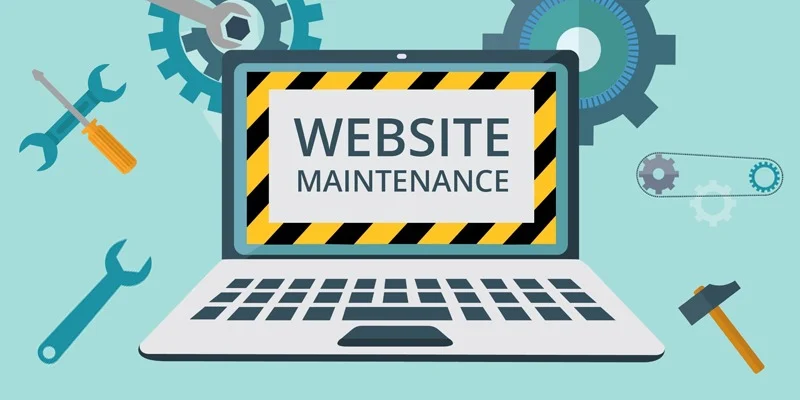
Website Maintenance
The frequency of website maintenance will depend on the size and complexity of your website. However, it is a good idea to have your website maintained at least once a month.
Website maintenance can be done by yourself or you can hire a web developer or web maintenance company to do it for you. If you do not have the time or expertise to do website maintenance yourself, it is a good idea to hire a professional.
need to hire a professional to Fix your website?
Website errors occur for several reasons. This could be because your website has been hacked or infected with malware, a code update that caused other code to break, a server modification such as a server upgrade, or moving your website to a new host.
Our team will fix any issues with your website. The more detailed information you can provide us will help us fix website problems faster. Like what the last change or update that was made to the website. If you installed a plugin or a made a change recently. We can still resolve the problem without details but it will take longer as are troubleshooting. We will often need hosting access to resolve most problems, admin access only will often not be enough.
We are an established transparent business and we will earn your trust.
See some examples of website repairs below.
Theme issues
Broken Themes
HTML, CSS, JS
or PHP Error
E-Commerce
Website Errors
SSL/ HTTPS
Errors /404
Error in
Database Connection
Connection
Timed Out Error
Unable to Access
Admin Area
PHP memory
limit issues
White Screen
of Death
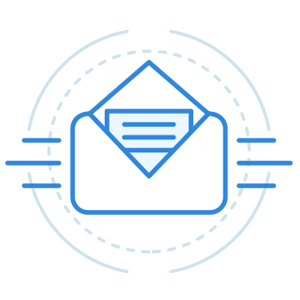
1. Contact
Open a support ticket describing your issue.
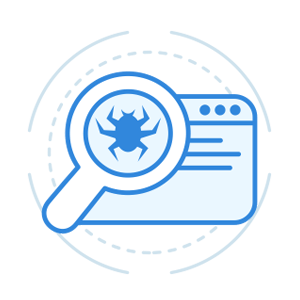
2. Review
We’ll assess the task and send you a quote.
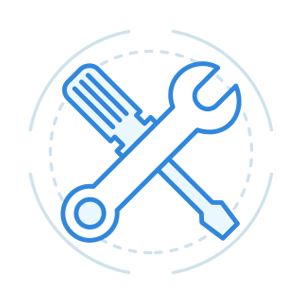
3. Fix
Our specialists get to work and fix your website.
Website repair company to solve website problems with 100% satisfaction
We are a top WordPress web development and technical support company specializing in hacked website repair, website malware removal, WordPress web design expert team, WordPress web design expert team, search engine optimization (SEO), web application development and site support regular WordPress website.
Fix Website Problems Top 10 FAQ
Improve website security by regularly updating software and plugins, using strong passwords, implementing a firewall, and using HTTPS encryption. Consider employing a web security expert for a comprehensive security audit.
Common website problems include broken links, slow loading times, security vulnerabilities, mobile responsiveness issues, and outdated content or design.
You can identify website issues by regularly conducting website audits, using tools like Google Analytics and Google Search Console, and monitoring user feedback and complaints.
Promptly fixing website problems is crucial to maintain a positive user experience, improve search engine rankings, enhance security, and ensure that your website meets industry standards and best practices.
To address slow loading times, you can optimize images, leverage browser caching, minimize HTTP requests, use a content delivery network (CDN), and consider upgrading your hosting plan.
Fix broken links by regularly checking for them using tools like broken link checkers, updating or redirecting broken URLs, and ensuring that new content is linked correctly.
Responsive web design ensures that your website adapts to different screen sizes and devices. It’s essential for providing a seamless user experience and is favored by search engines for mobile-friendliness.
Fix content issues by regularly reviewing and updating outdated content, improving readability and SEO optimization, and ensuring that content is relevant and engaging to your target audience.
Website accessibility ensures that people with disabilities can access and use your website. Fixing accessibility issues is essential for inclusivity, legal compliance, and to reach a broader audience.
The decision depends on your expertise and the complexity of the issues. For critical problems or if you lack technical skills, it’s advisable to consult with web developers, designers, or digital marketing experts who can efficiently address issues and ensure your website operates optimally.
Addressing website problems promptly and effectively is crucial for maintaining a positive user experience, search engine ranking, and overall website performance. Whether you tackle these issues yourself or enlist professional help, consistent monitoring and maintenance are key to a healthy website.

